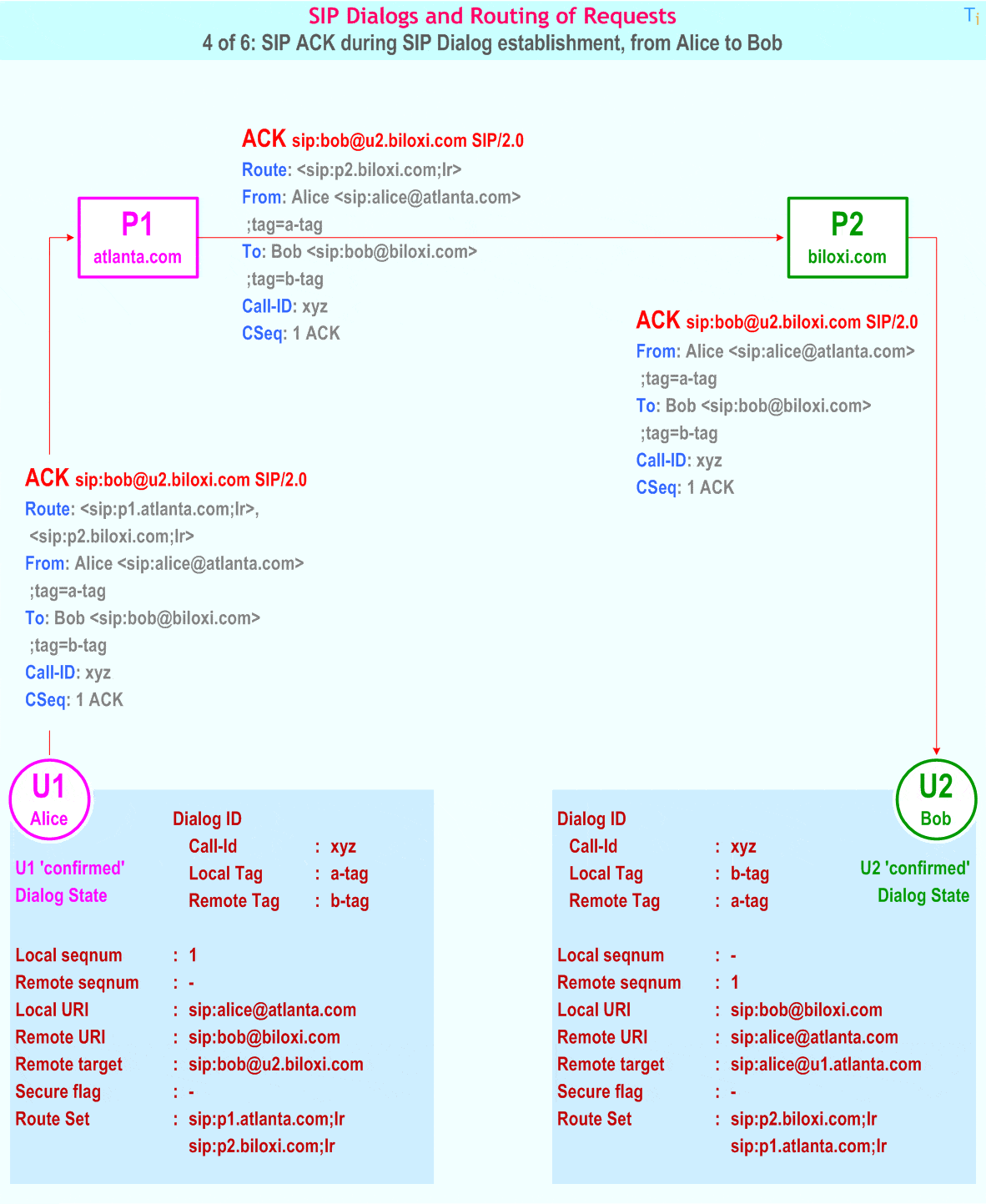
U1:
-
generates the ACK request by using many of the components of the state stored as part of the dialog:
- the URI in the To field of the request is set to the remote URI from the dialog state;
- the tag in the To header field of the request is set to the remote tag of the dialog ID;
- the From URI of the request is set to the local URI from the dialog state;
- the tag in the From header field of the request is set to the local tag of the dialog ID;
- the Call-ID of the request is set to the Call-ID of the dialog;
-
uses the remote target and route set to build the Request-URI and Route header field of the request:
- the route set is not empty, and the first URI in the route set contains the lr (loose routing) parameter: the UAC places the remote target URI into the Request-URI and includes a Route header field containing the route set values in order, including all parameters;
- note: if the route set was empty, the UAC would place the remote target URI into the Request-URI and would not add a Route header field to the request;
P1:
- inspects the Request-URI (sip:bob@u2.biloxi.com) and does not change it because it is not responsible for the resource indicated in this URI;
- sees that it is the first value in the Route header field so it removes that value;
- forwards the request to the resource indicated in the topmost Route header field by applying DNS procedures.
P2:
- inspects the Request-URI: it is not responsible for "u2.biloxi.com" (it is responsible for "biloxi.com", not "u2.biloxi.com") so it does not change it;
- sees that it is the first value in the Route header field so it removes that value;
- forwards the request to the resource indicated in the Request-URI (the route set now is empty) by applying DNS procedures.